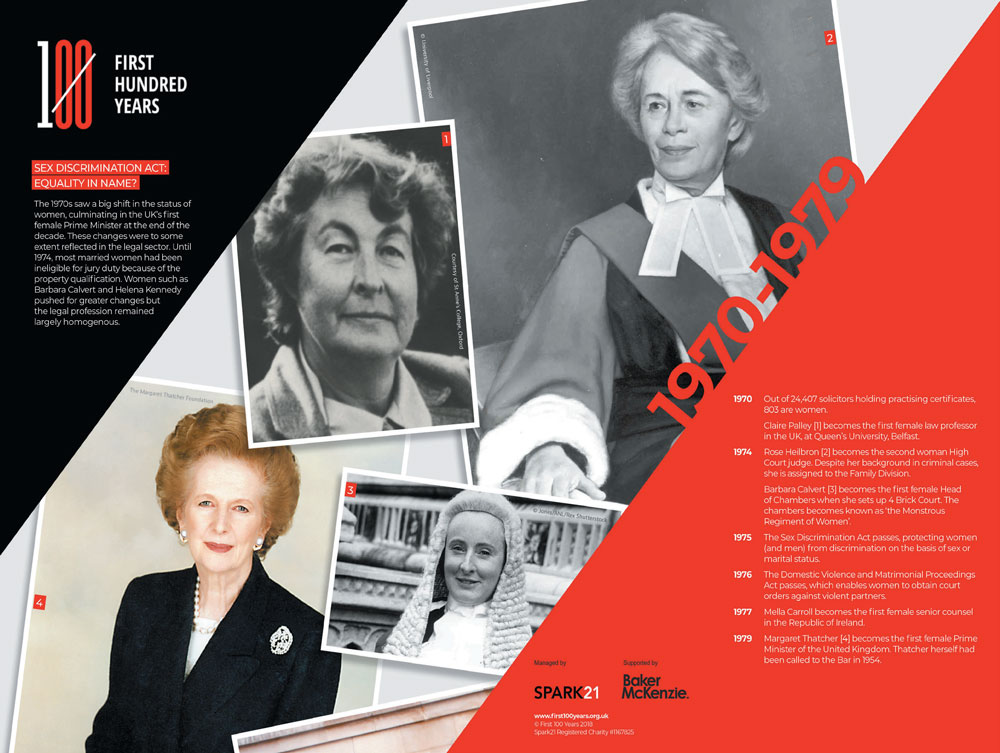Sex Disqualification (Removal) Act 1919

If you have found this article useful, why not log this towards your CPD? To find out how, visit (https://www.cilex.org.uk/membership/cpd/cpd_resources)
Celebrating 100 years of women practising in the law
In December 1919, the Sex Disqualification (Removal) Act received royal assent, enabling women to become lawyers for the first time.
On Christmas Eve 1919, a woman called Helena Normanton made history, becoming the first woman in England and Wales to join the Inns of Court, the first step towards qualifying as a barrister. This followed the passing of the Sex Disqualification (Removal) Act, ie, ‘an Act to amend the law with respect to disqualifications on account of sex’, on 23 December 1919, which paved the way for women to become lawyers for the first time.
This year the legal profession celebrates the centenary of the 1919 Act, which was the culmination of over 40 years’ campaigning by women to enter the legal profession. It is an opportunity to reflect on the achievements of the female legal pioneers of the past 100 years and what their stories tell us about tackling the ongoing barriers to the progress of women lawyers.
While considerable progress has been made - with the number of women entering the law now outnumbering men - female representation at the top still lags behind significantly. There is much to do: women are still not suficiently represented at equity partner level in law firms, among QCs or in the judiciary, and a considerable gender pay gap persists. Given that 75% of our members are women, we believe that CILEx has a key role to play in working towards equality in the profession.
The Sex Disqualification (Removal) Act
The passing of the 1919 Act was the culmination of a long and protracted legal fight. Women had made many attempts to become lawyers before 1919. The first application by a woman to be admitted to the Law Society was made in the 1870s and, in 1873, a petition signed by ‘92 ladies’ was submitted, seeking permission to attend lectures of the Council of Legal Education at Lincoln’s Inn. Despite the fact that women were already reading law at university, the petition was rejected by the Inns of Court.
An important step forward was Bebb v The Law Society [1914] 1 Ch 286, an unsuccessful legal action by Gwyneth Bebb and three other women to get the Law Society to admit them to its preliminary examinations, on the basis that women were ‘persons’ within the meaning of the Solicitors Act 1843, and so were entitled to be admitted.
The judge ruled that women were unable to carry out public functions unless parliament changed the law. Publicity from the case helped the campaign for women’s admission to the legal profession and paved the way for the 1919 Act.
When the 1919 Act received royal assent, it ensured - for the first time - women’s entry into the professions and stipulated that women would receive their degrees from universities on completion of study. The legislation removed all legal barriers to women working as lawyers on the ground of their sex, and enabled women to act as jurors and become magistrates.

The First 100 Years project
One female lawyer who has been instrumental in marking this landmark year is Dana Denis-Smith, founder of the First 100 Years project and CEO of Obelisk Support. In 2014, she stumbled upon a photograph from 1982. It showed City law firm Herbert Smith (now Herbert Smith Freehills) celebrating its centenary: front and centre of the photo was the firm’s first female partner, Dorothy Livingston.